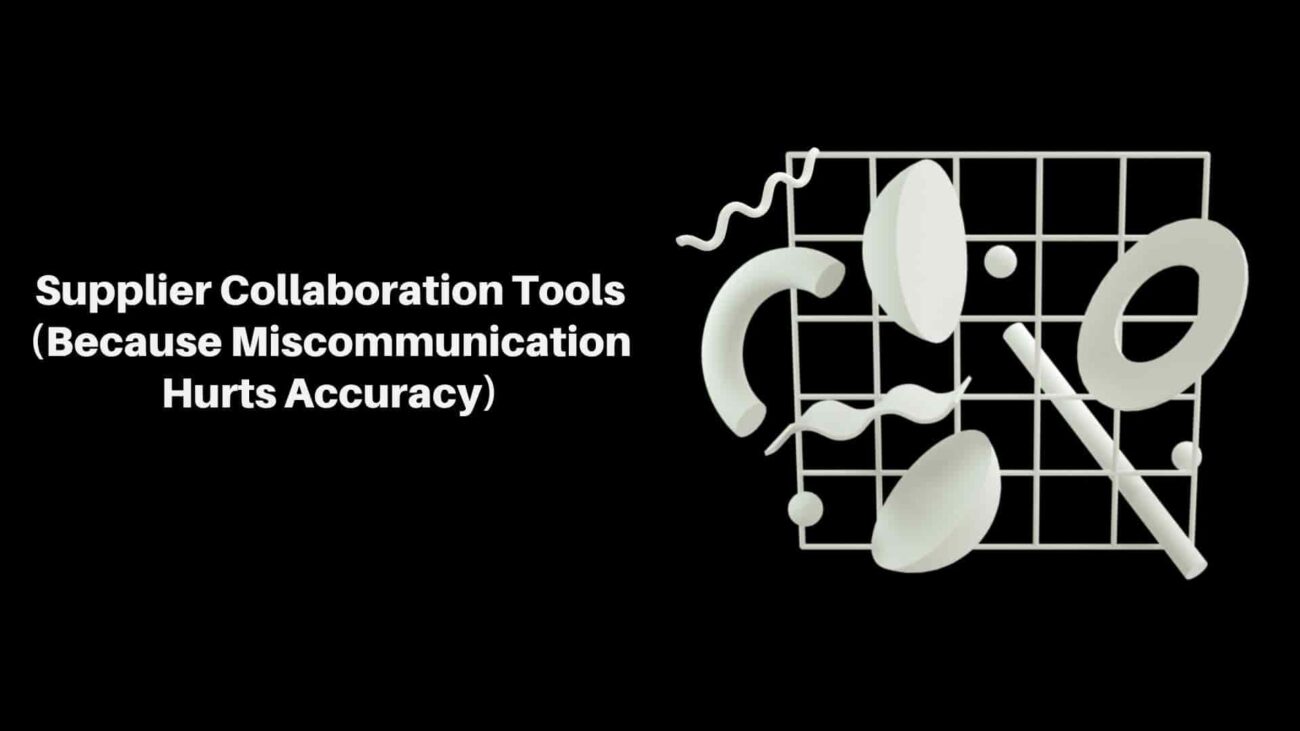Introduction:
Keeping track of inventory can feel like a never-ending battle. One minute you think you’ve got everything under control, and the next, you’re staring at a discrepancy that makes no sense. Maybe it’s a misplaced shipment, a scanning error, or just good old-fashioned human oversight. Whatever the cause, inaccurate inventory costs time, money, and sanity.
The good news? Technology can help a lot. Not in some vague, futuristic way, but with practical tools you can implement right now. Some of these solutions are obvious, while others might surprise you. And no, you don’t need a massive budget or a team of IT experts to make a difference. Even small changes can add up to big improvements in accuracy.
1. Barcode Scanning (Because Manual Entry Is a Nightmare)
Remember the last time you had to manually enter SKU numbers into a spreadsheet? Exactly. Barcode scanners eliminate typos, speed up data entry, and reduce the chances of human error. They’re not exactly new tech, but they’re still one of the simplest ways to tighten up inventory accuracy. Pair them with a solid inventory management system, and suddenly, counting stock becomes a lot less painful.
2. RFID Tags (Like Barcodes, But Smarter)
RFID takes barcode scanning to the next level. Instead of scanning items one by one, you can capture data from multiple tags simultaneously—no direct line of sight needed. It’s especially useful for high-volume warehouses where speed matters. The downside? Cost. RFID tags are pricier than barcodes, but for businesses dealing with large inventories, the trade-off might be worth it.
3. Cloud-Based Inventory Systems (Real-Time Updates, Fewer Headaches)
Spreadsheets have their place, but if you’re still relying on them for inventory management, you’re making life harder than it needs to be. Cloud-based systems sync data in real time, so everyone from warehouse staff to sales teams works off the same numbers. No more version control issues, no more outdated files. Just accurate, up-to-date information.
Read more: How Home Healthcare Technology is Revolutionizing Patient Care
4. Automated Reordering (Because Forgetting to Restock Happens)
Running out of stock is frustrating. Overordering is wasteful. Automated reorder points help strike a balance by triggering purchase orders when inventory dips below a set threshold. It’s not foolproof, you’ll still need to adjust those thresholds occasionally, but it removes a lot of guesswork.
5. IoT Sensors (For Perishables and Sensitive Stock)
If you deal with temperature-sensitive goods (like food or pharmaceuticals), IoT sensors can be a game-changer. They monitor conditions in real time and alert you if something’s off—before spoilage becomes a problem. Even if your inventory isn’t perishable, IoT can track movement, helping prevent theft or misplacement.

6. AI Demand Forecasting (Fewer Surplus Stock Surprises)
AI isn’t just for sci-fi movies. Modern forecasting tools analyze sales trends, seasonality, and even external factors (like weather or economic shifts) to predict demand more accurately. The result? Fewer panic orders and less dead stock taking up space.
7. Mobile Inventory Apps (Because Desktops Aren’t Always Handy)
Warehouse staff shouldn’t have to run back to a computer every time they need to check stock levels. Mobile apps let them update and access data on the go, reducing delays and errors. Plus, they’re just more convenient—no one wants to lug around a laptop while counting boxes.
8. Cycle Counting (Small, Frequent Checks Beat Massive Audits)
Instead of shutting down operations for a full inventory count (and dreading the chaos that follows), cycle counting breaks the process into smaller, manageable chunks. You audit a portion of inventory regularly, catching discrepancies early before they snowball. It’s less disruptive and keeps accuracy consistently high.
9. Integration with POS Systems (Sales and Stock in Sync)
If your point-of-sale system doesn’t talk to your inventory software, you’re basically working blind. Integration ensures that every sale automatically updates stock levels, so you’re not stuck reconciling numbers at the end of the day.
10. Drones for Warehouse Audits (Yes, Really)
This one feels a bit futuristic, but drones equipped with scanners can quickly fly through warehouses, capturing inventory data in hard-to-reach areas. They’re not yet mainstream, but for large operations, they could save hours of manual labor.
11. Blockchain for Traceability (If Transparency Matters)
Blockchain isn’t just for cryptocurrency. In inventory management, it creates an unalterable record of every transaction, making it easier to trace errors or fraud. It’s overkill for some businesses, but if authenticity and chain of custody are critical (like in luxury goods or pharmaceuticals), it’s worth considering.
12. Voice-Activated Picking (Hands-Free Efficiency)
Voice-directed warehouse systems let workers receive and confirm picks through headsets, keeping their hands free and reducing errors. It sounds niche, but in high-speed environments, every second counts.
13. Predictive Analytics (Spotting Problems Before They Happen)
Beyond demand forecasting, predictive analytics can flag potential inventory issues like recurring discrepancies in certain locations or with specific products. It’s like having a detective sift through your data for red flags.
14. Supplier Collaboration Tools (Because Miscommunication Hurts Accuracy)
Sometimes, inventory errors start before stock even arrives. Supplier portals and EDI (Electronic Data Interchange) systems streamline communication, ensuring purchase orders, invoices, and deliveries match up. Fewer mismatches mean fewer headaches later.

15. Employee Training (Tech Is Only as Good as the People Using It)
This one’s low-tech but crucial. The fanciest system won’t help if employees don’t use it properly. Regular training ensures everyone understands processes, reducing avoidable mistakes.
Read more: Inventory Accuracy Best Practices
Advantages
Real‑Time Tracking & Visibility
Systems with barcode scanning, RFID, and IMS tools update stock immediately. This eliminates delays, avoids stockouts, and improves decision‑making. One source notes that real‑time tracking “ensures your information is always current”.
Error Reduction & Efficiency
Automating scan-based processes cuts down manual entry mistakes and double counts. It frees up staff for higher-value tasks. “Automates inventory tracking…reducing human errors”.
Streamlined Reordering & Forecasting
With set reorder points and analytics, the system flags when to restock and helps forecast demand. This “prevents stockouts and overstocking”.
Integration with Business Systems
IMS tools often connect with POS, accounting, e-commerce platforms, enabling data consistency and cross-functional reporting.
Time & Labor Savings
Automated processes—order fulfillment, inventory counts, reports save time and labor costs. They “reduce the need for manual data entry” and let teams focus on strategy.
Limitations
High Initial Cost & Complexity
Setting up IMS, hardware like scanners/RFID, and training is expensive and resource-intensive.
Dependence on Tech & Potential Downtime
Systems can fail (due to power outage, software glitches, network issues) disrupting operations. Backups and redundancies are crucial.
Data Quality & Scope Limitations
Errors in data (scans missed, mismatches in counts) still occur. Perpetual inventory systems require periodic physical audits because losses like theft or damage aren’t auto-detected.
Security Risks & Privacy Concerns
Systems contain sensitive data and can be vulnerable to hacks. Strong security protocols are essential.
Ongoing Maintenance & Expertise Needs
Requires staff training, system updates, and IT support. Plus, managing large datasets (e.g., RFID) can be overwhelming without skilled analysts.
Summary Table
| Advantage | Limitation |
|---|---|
| Real‑time visibility | High setup cost & complexity |
| Reduced errors & labor | Tech failures & downtime risk |
| Smart reordering & forecasting | Data quality issues without physical audits |
| System integration across departments | Security and privacy vulnerabilities |
| Time saved on manual tasks | Requires ongoing maintenance & expertise |
Read more: 5 Ways Technology Can Improve Your Inventory Accuracy
Final Thoughts
Technology won’t magically erase all inventory problems, but it can turn a chaotic process into something manageable. The key is finding the right mix of tools for your specific needs, because what works for a massive retail chain might be overkill for a small boutique.
Start small if you need to. Maybe it’s barcode scanners first, then cloud software, then AI forecasting down the line. The goal isn’t perfection (because let’s be real, that’s impossible) but steady improvement. And with the right tech, you’ll spend less time fixing errors and more time growing your business.


1 thought on “Inventory 15 Ways Technology Can Improve Your Accuracy”